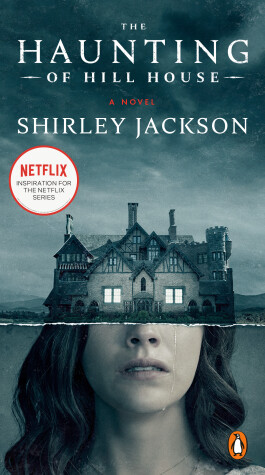Reviewed by brokentune on
As I may have mentioned before, this must be one of the most perfect opening lines in literature. And it is so befitting of the book...
Allright, I dragged my heels reading this book. Not only am I not a fan of horror, I had also had a disappointing experience with Shirley Jackson in the past which left me dismissing her other books.
However, Halloween was approaching and The Haunting of Hill House seemed to make its annual appearance on the reading lists of friends and trusted reviewers, and I guess I felt like submitting to the curiosity of wanting find out why people think it's such a great book.
Anyway, once started I found it hard to put the book down - except after sundown. No way am I reading books about haunted houses and creepy appearances and blood soaked rooms after dark - even if it is all in my head.
"NO HUMAN eye can isolate the unhappy coincidence of line and place which suggests evil in the face of a house, and yet somehow a maniac juxtaposition, a badly turned angle, some chance meeting of roof and sky, turned Hill House into a place of despair, more frightening because the face of Hill House seemed awake, with a watchfulness from the blank windows and a touch of glee in the eyebrow of a cornice."
But that is just it, all the horror - or in this case - terror that is described in the book left me wondering whether it was in my head or that of the young protagonist who seems to be most affected by the goings on at Hill House, where she has been invited to stay with a group of other strangers to investigate if there is any presence of the supernatural.
In a way this set up is quite fun - like an Agatha Christie mystery, the inevitable house party that ends in murder, except that there is no formula to Jackson's story. Nor is there one clear solution that will convict the guilty and grant peace of mind to the innocent. Much throughout the book it is not even clear whether there are any innocent or guilty parties. As with much else, there are rather blurred lines with respect to truth, reality, fact and the perception that ultimately leads to the terror invoked in the characters and the reader.
So, no, The Haunting of Hill House is not your usual ghost story or horror flick. It is not a gory tale of slashing and screaming but a tense psychological experience that is written so well that you can actually feel the chilly drafts, smell the moldy scents, and hear the doors falling shut.
And, yet, there is more to the story still. Jackson's characters were rather charming and there is something playful about the setting and the interaction between the house guests and the cook, whose only only concern throughout the book seems to be ensuring that her daily schedule is adhered to. It is this lighthearted attitude to the whole experiment that lends even more significance to the odd behaviour and experiences of the young woman who seems most affected by the house. Is what she describes really happening or is it only an illusion?
Reading updates
- Started reading
- 17 October, 2015: Finished reading
- 17 October, 2015: Reviewed
